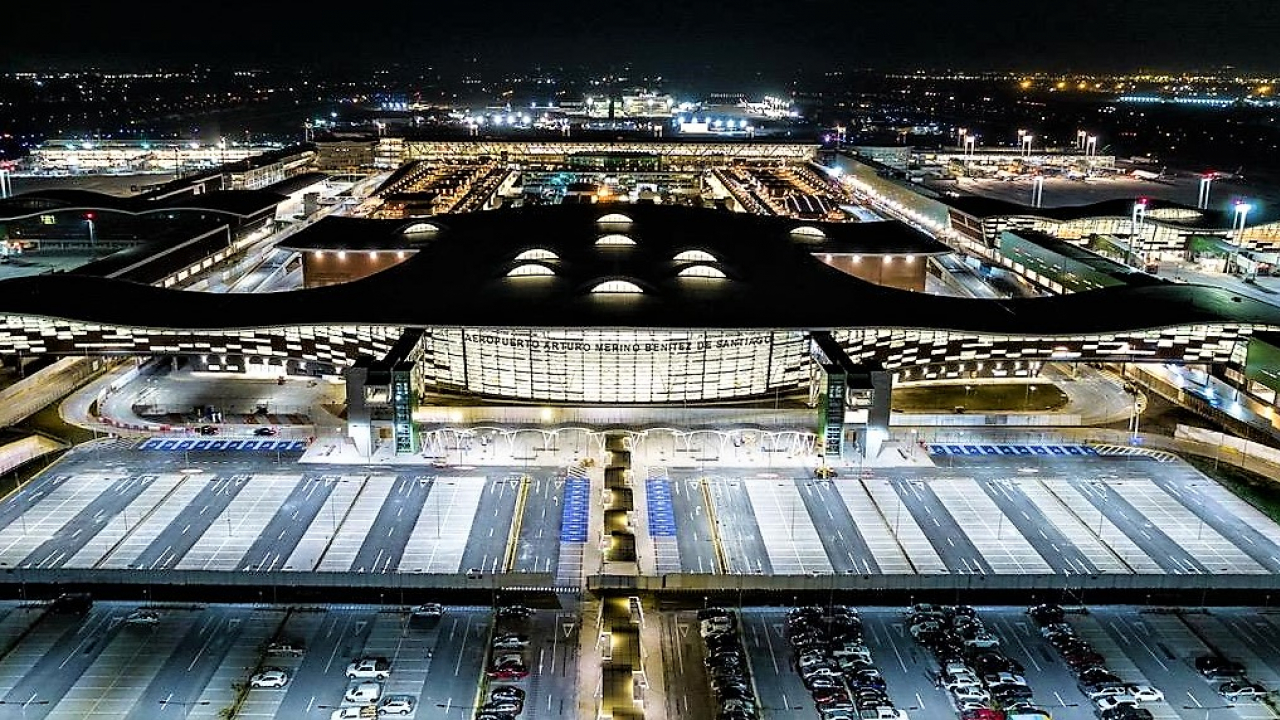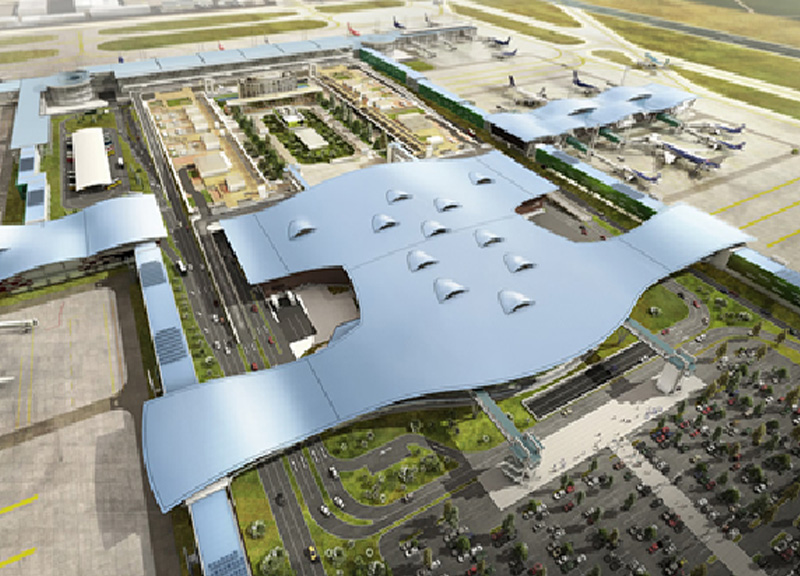What’s New at Latin America’s Largest New Terminal in Santiago, Chile (Part 2 of 2)
Stanis Smith
February 9, 2022

|
A decade in the making but now finished. What makes Santiago’s new international terminal worth the wait? In the first part of this article we discovered the overall objectives of the project. In this second part, we get an idea of how the terminal got a truly Chilean makeover. |
From an architectural perspective, a key brief for the new international terminal at Comodoro Arturo Merino Benítez International Airport in Santiago, Chile (SCL) was to create a unique and distinctive ‘sense of place’ that would evoke the extraordinary landscape of the country.
Chile’s long and narrow geography is defined by the majestic Andes mountains to the east and the Pacific Ocean to the west. The design therefore drew its inspiration from the natural undulations of both the mountains and the sea.
The main check-in hall is crowned by a lofty and elegantly curving roof facing the plaza that echoes the form of the surrounding mountains. Each of the concourses for the new gates have a pair of sinuous wavy ceilings that are “out of phase” with each other. The almond-shaped windows between the two “waves” bring natural light into the center of the concourses, creating interesting patterns of light and shade along their entire length.
The terminal’s structure has been designed to meet the seismic challenges of an airport that is situated near a geological fault line. At the same time, care has been taken to go beyond function and design the steel columns and structure in an elegant and attractive manner.
Making sustainable choices
The terminal’s exterior design is a response to sustainability considerations, as well as the desire to give the building a Chilean personality. Many airport terminals use all-glass curtain-wall systems for their exterior, an approach that typically causes unwanted glare for passengers and agents, and increases the capital and operating cost of the air-conditioning equipment needed to cool the building.
The design of this terminal’s exterior is a combination of vision glass and solid panels. The solid panels reduce the heat load, while the transparent panels have been strategically placed to maximize views and natural light. These different panels alternate in a unique and playful manner providing visual interest to both the interior and exterior. The solid panels are finished in copper-colored material, a nod to the metal that is one of Chile’s main exports.
The design prepared by Stantec Architecture and Amunategui Barreau was the subject of a P3 bid that was won by the Nuevo Pudahuel consortium, made up of VINCI Airports, Aéroports de Paris (ADP) and Astaldi.
It is a testament to the consortium that they have respected the initial design and the long-term vision. The terminal, as constructed, is almost identical to the initial concept. Almost ten years after design began, the building now in place reflects the client’s commitment to a unique world-class terminal that will position Santiago as a global international hub.
______________________________________________
Stanis Smith FRAIC AIA – Stanis is an independent architect and strategic advisor to airport clients. He led Stantec’s airport group from 2003 to 2019 and led the concept design team for Santiago’s new international terminal.


